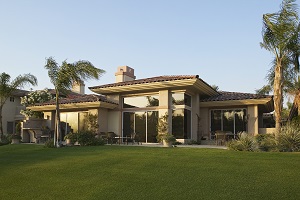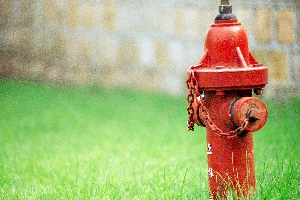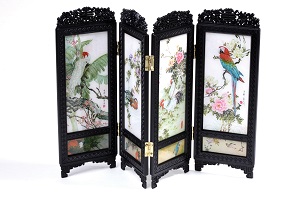The bright hall is one of the popular buzz words in the practice of feng shui.
It is a direct translation of ming tang (明堂) in the Chinese language.
In feng shui, this term refers to an open space in front of a property’s facade or main door. The bigger the space, the “brighter” it would be.
The word hall is a reference to space. And the word bright is a reference to being wide open.
If the space in front of a property is confined and enclosed, then there is no open space and thus, there is no presence of a bright hall.
For clarity and myth-busting, take note that light fixtures at the front yards has no bearing on bright hall no matter how many lumens your lighting is capable of.
Why open spaces?
The purpose of open spaces is for energy, or chi, to accumulate gently. And the reason for it’s ideal location to be in front of the property is so because it is the best place for the the house to draw energy from.
The facing of a property is one of the most important features of a house because it is the main entryway for energy.
If this energy is auspicious in nature, then the household would be able to harness good luck for family members.
And with open spaces, there are not hostile structures that emit sha chi. It also allows energy to meander. Creating the perfect condition for auspicious chi to collect.
At this point, it is important to add that bright halls do not create auspicious chi. Their main role is to provide the best conditions for chi to be easily absorbed by the house.
Whether a source of energy is good or bad depends on energy maps.
However, even if the energy located at the bright hall area is deemed to be mostly inauspicious, this configuration also allows a household to draw on the little auspicious chi contained within the inauspicious.
This is why bright halls in front of homes are usually desirable no matter which direction a house faces.

One big reason for this is with reference to the classical concept of the 4 celestial creatures in land form feng shui.
This states that the frontal area of a property belongs to the realms of the phoenix. And it needs open space just like how the tortoise at the back of a house would need a mountain.
Saying that, the best and most potent way to attract wealth luck into the house is if the bright hall is located in a wealth area as determined by an energy map such as flying star natal charts.
Some practitioners insist that a bright hall should be as spacious as possible. This can be evidently observed for instance, in various historical sites in China and Taiwan. The area of open spaces in front of the main property can be multiple times that of the land area of the property.
But do note that these are public buildings meant for the people.
The mass amount of visitors to these sites also play a role in creating the auspicious yang energy that the buildings can harness from the wide open spaces.
For a residence that is meant for a regular household, the bright hall don’t really need to be many times the size of the house to reap positive feng shui effects for the residents.
Unlike a place of interest, a regular family home is not going to constantly have thousands of guests walking about the bright hall anyway.
After all, there is only so much positive chi that a house can absorb. Just because there is more chi does not mean that the house would be able to tap on all of it.
It is hard to put a number on the ratio of bright hall size to house size in order for the former to be potent.
A lot depends on judgment.
But is is probably safe to say that a 1:1 ratio would be more than sufficient for the average house. Even that is often way more than necessary.
If you have all the freedom to design and construct the premises however you like, you might even want to consider giving the bright hall a golden rectangle ratio.
A hostile structure in the bright hall such as a lamp post or pylon can be very bad for feng shui.
External and internal bright hall
The concept of the bright hall is mostly associated with the open space at the front of a property as mentioned earlier.
But in feng shui practice, the area directly inside the main door can often also be termed as a bright hall. This assumes that the main door is aligned to be at the facing of the property.
For this reason, sometimes the outdoor open space is called the external bright hall, and the indoor open space is labeled as the internal bright hall.
While the internal bright hall is not a necessary layout that homeowners need to insert into the floor plan, many feng shui masters believe that such a configuration help a house draw in energy from the external bright hall more effectively.

The logic behind this is that chi from the external bright hall makes it way into the internal bright hall in a smooth transition. And in turn the energy can make it’s way to the other areas of the house interiors.
Sort of like creating a car porch so that enables a vehicle to blend nicely into a property when making it’s way from the street into a residence.
To make it clear, an internal bright hall can be desirable. But it’s not essential.
In recent times, the term bright hall has been loosely used to refer to internal forms with openly spaced common areas. Especially with living rooms that are intentionally designed to be spacious.
However such feng shui setups are usually in reference to flying star feng shui when the living room is judged to have a favorable water star.
Thus, an open concept is designed to take advantage of the water star. Not primarily to create a bright hall.















